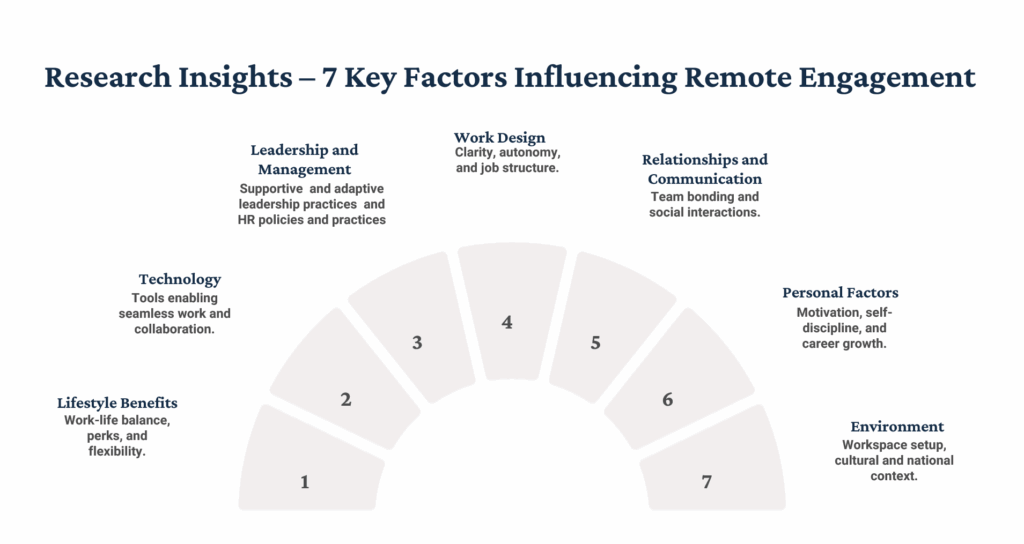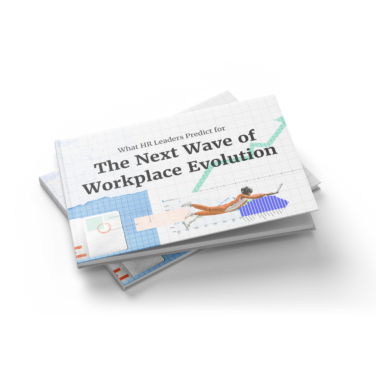Remote Work Reality Check: Engagement challenges in remote work stem from outdated leadership models and onboarding practices. Leaders must adapt strategies to meet the unique demands of remote teams.
Design Matters for Engagement: Engaging remote teams isn't just tech; it's about thoughtful design in leadership and organizational practices that foster connection and collaboration.
Leadership Evolution Required: Managers need ongoing training to lead remote workers effectively; using pre-pandemic methods can hinder engagement and productivity.
The idea that engagement naturally crumbles in remote work is lazy thinking. What’s actually failing? Leadership models, onboarding experiences, and organizational accountability.
Recently, I attended Running Remote 2025. Dr. Adora Ikwuemesi delivered a powerful wake-up call to the attendees there: remote engagement isn’t just about tech or flexibility—it’s about design. And if leaders aren’t evolving, neither will their teams.
While remote work offers flexibility and freedom, it also introduces fragmentation, isolation, and misalignment. According to recent global figures, engagement dropped to 23% worldwide in 2023, with Africa and Europe reporting the lowest levels at just 13%.
So what’s driving this trend and what can we do to fix it?
Leadership Needs a Redesign
You can’t lead remote teams like you’re still in the office. The demands are different and how managers and leaders connect with employees has needed to evolve. But for many, mimicking the old in-office solutions in a digital environment has been the only approach.
“Remote work leadership skills are very different. So you have to keep training and retraining leaders,” Ikwuemesi, Director at Kendor Consulting, said during a presentation titled “A Research-Backed Strategic Framework for Enhancing Remote Work Engagement.”
The key message? If your managers are still managing like it's 2019, you’re not just stalling engagement—you’re quietly driving it into the ground.
One challenge for remote workers is they often feel invisible. The impromptu desk chats, hallway insights, and spontaneous collaboration that energize in-office culture are difficult to replicate online. Combine that with blurred work-life boundaries, and you get engagement fatigue and a heightened risk of burnout.
So how can organizations address this challenge beyond surface-level solutions like virtual happy hours or monthly check-ins?
The Research: What Actually Drives Remote Engagement?
Dr. Ikwuemesi presented a study of 24 remote workers in Nigeria which uncovered 7 critical factors influencing engagement in a distributed context.

- Lifestyle Benefits – Flexibility, wellness, and perks that support balance.
- Technology – The infrastructure for seamless, secure, connected work.
- Leadership & Management – Adaptive leadership, HR policies, and people-first practices.
- Relationships & Communication – Trust-building, bonding, and human connection.
- Work Design – Role clarity, autonomy, and meaningful tasks.
- Personal Factors – Motivation, self-leadership, and growth opportunities.
- Environment – Physical setup and the cultural/national context of the worker.
The problem with old playbooks
At the core of Ikwuemesi’s observations about how these seven factors can be influenced is the notion that many managers are ill-equipped to lead remote teams.
“Some managers are still checking in just to ask for project updates, but that’s oversight—not engagement,” she said.
She’s quick to differentiate between frequent communication and meaningful connection. If you want to understand how someone feels about leadership, their technology challenges, their work environment, communication style and personal factors that determine success, you have to create communications that are quality focused.
“The quality of communication matters more than quantity,” she says. “You can be in touch every day and still be missing the human element.”
4-Factor Strategic Framework
Ikwuemesi’s findings shaped a 4-Factor Framework that any organization can use to assess and improve remote engagement. It focuses on:
- Personal – The individual’s wellness, motivation, and career journey.
- Organizational – Encompasses leadership style, policy strength, and cultural intent.
- Environmental – Addresses physical setup, ergonomics, and external context.
- Technological – Concerns tools, systems, connectivity, and digital fluency.
The emphasis of this framework is on creating structures that match the realities of remote life. And those realities are often overlooked.
“When 80% of your workforce is operating from their home, your office isn’t standardized anymore,” Ikwuemesi explains. “One person might have a proper desk and dedicated space. Another might be working from a shared room or using the kitchen table.”
This discrepancy becomes even more important when applied to international teams, particularly those working in regions with unreliable electricity or limited access to high-speed internet.
“Someone once told me they joined a Zoom meeting with a flashlight because the power went out,” she recalls.
How to Use the Framework: A Step-by-Step Guide
To translate this framework into action, Dr. Ikwuemesi offers a three-phase approach:
1. Conduct an engagement audit
Assess how well your organization is supporting each of the four areas using surveys, anonymous feedback tools and upward feedback meetings. Example questions include things like:
- Are career growth paths visible?
- Do we have the right tools for seamless connection?
- Do we have structured ways for employees to influence decision-making?
- Do we provide stipends, equipment, or allowances to support ergonomic workspaces?
- Are we relying too much on one communication channel (e.g., Slack, Zoom)?
2. Design and implement targeted initiatives
Build strategies that are tailored—not templated.
Too many engagement initiatives fail because they’re borrowed from best practices without considering local realities, team dynamics, or cultural context. A virtual trivia night won’t solve burnout. A Slack bot that prompts for “daily wins” won’t rebuild trust.
Instead, effective engagement strategies begin with a clear understanding of the root issues—gathered through pulse surveys, listening sessions, onboarding debriefs, or exit interviews.
Once pain points are identified, the key is to design interventions that solve specific problems for specific teams. That might look like:
- For a team struggling with visibility: Implement async “work diaries” or regular goal demos.
- For junior employees feeling lost: Launch a structured mentorship program or “remote onboarding buddy” system.
- For employees working in low-bandwidth environments: Shift more communication to asynchronous tools and limit real-time video expectations.
- For overextended managers: Provide leadership training focused on emotional intelligence and time prioritization in distributed contexts.
These initiatives should ladder back to both business objectives (e.g., retention, productivity, innovation) and team-level needs (e.g., connection, clarity, belonging).
And just as importantly: test, evaluate, and iterate. Engagement design isn’t a one-and-done project. It’s a dynamic practice rooted in experimentation and learning.
3. Monitor and evolve
Use quarterly pulse surveys, analyze trends, and iterate. The engagement strategy should evolve as your organization grows, but the key is to remain intentional.
When asked what one action organizations should take immediately, Ikwuemesi doesn’t hesitate.
“Connect,” she says. “But connect by design, not by accident.”
If there’s one takeaway from her research, it’s that remote engagement isn’t impossible—it’s just misunderstood.
First 90 Days: A Make-or-Break Window
What happens when a 22-year-old starts their first job and it’s entirely remote? No cubicle neighbor. No welcome lunch. No “hey, let me show you how this works.”
So how are they supposed to engage?
“If you were talking to a young person out of college, someone who never had an office job, how do they become engaged in the first 3 months?” she asked.
Here’s the answer: they don’t—not without serious assistance.
Stop shifting the burden
Too often, we expect new employees—especially those early in their careers—to "figure it out." But in a remote world, independence without structure is just isolation in disguise.
We’ve put the burden on them, but it needs to be on the organization. Leaders need to be very intentional but so do new hires. No one is going to save you is the message. They’ll need to network upwards. But the environment should provide them with a structure to build their career.
The lesson? Culture isn't what you say—it’s what you build.
Time to Act: 3 Key Moves
- Re-skill your leaders.
Remote leadership is its own discipline. Invest in it, and take a remote work course if you can! - Design the first 90 days.
Onboarding should be immersive, structured, and mentorship-rich. - Shift the accountability.
Don’t leave new hires to sink or swim. Build systems that make engagement the default.



